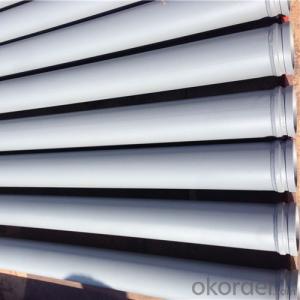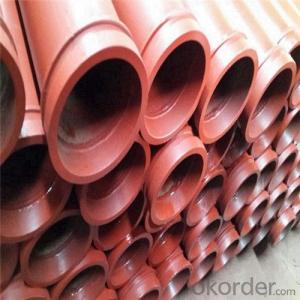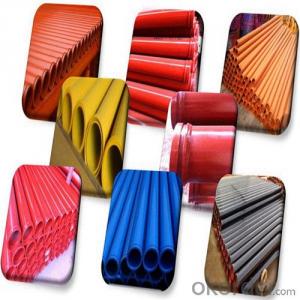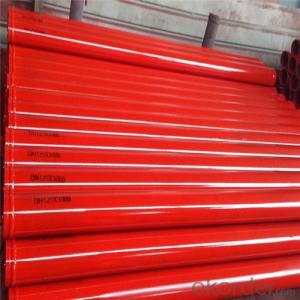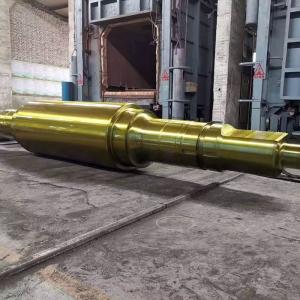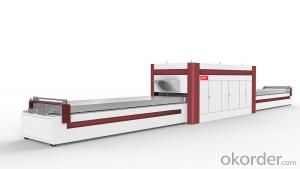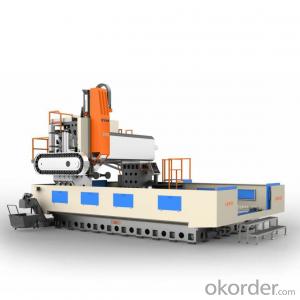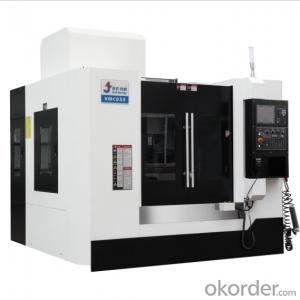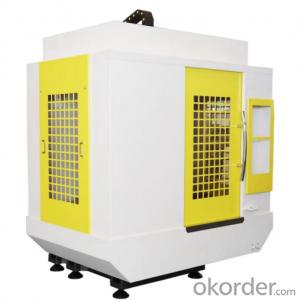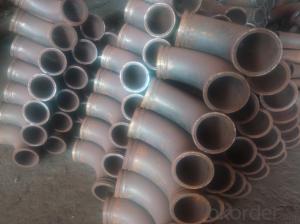3M Seamless Delivery Pipe for Concrete Pump Thickness 4.5mm
- Loading Port:
- Tianjin
- Payment Terms:
- TT or LC
- Min Order Qty:
- 50 pc
- Supply Capability:
- 5000 pc/month
OKorder Service Pledge
OKorder Financial Service
You Might Also Like
3M Seamless Delivery Pipe for Concrete Pump Thickness 4.5mm
1. Structure of 3M Seamless Delivery Pipe for Concrete Pump Thickness 4.5mm:
St52 Seamless Pipe: Now More People like use this kind for Truck Pump and Trailer Pump because of the quality is better and it is seamless kind, so this kind pipe is most popular in Middle East Price About 34USD-37USD.
Wear Resistant Pipe: Use for Truck Pump, Wear Resistant Layer is 2.5mm.Through heat treatment way make this pipe more strong (HRC60-62), Using Life: 25,000m³-35,000m³ Price about 65USD-68USD.
Two Wall Pipe: This pipe thickness (2mm+2.5mm), Using Life about 50,000m³-60,000m³
2. Main Features of 3M Seamless Delivery Pipe for Concrete Pump Thickness 4.5mm:
• High Wear-resistant, long service life, lower cost
• In case of quality problem the company provide free replacement.
• Provide technical support for free.
• Provide consumers with regular visits
• Ensure the supply of ancillary parts
• ISO9000 & 3C certificate
3. 3M Seamless Delivery Pipe for Concrete Pump Thickness 4.5mm Images
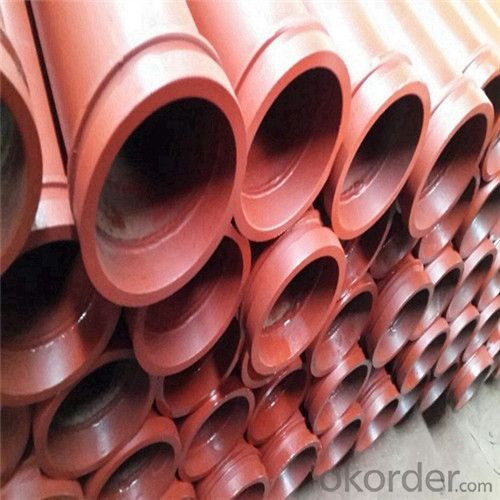

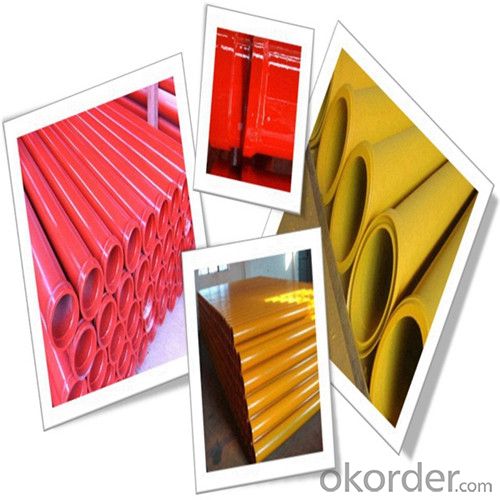
4. 3M Seamless Delivery Pipe for Concrete Pump Thickness 4.5mm Specification
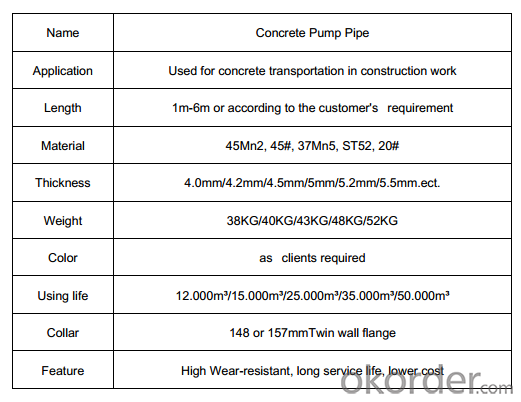
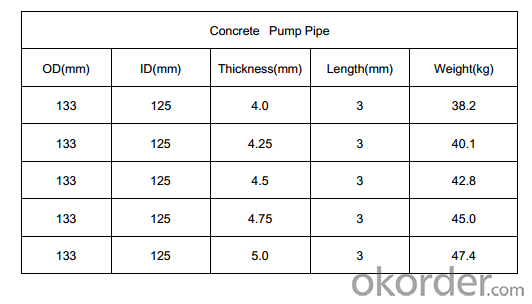
Production Process
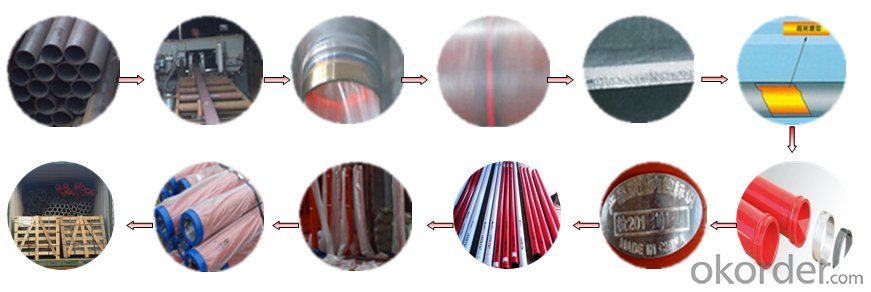
5. FAQ
We have organized several common questions for our clients, may help you sincerely:
①Is your products exported a lot?
We have exported to many, many countries. Every year we ship more than 30 containers of these spare parts. Our main market is in Middle-east, Asia & Africa.
②How to guarantee the quality of the products?
We have established the international advanced quality management system,every link from raw material to final product we have strict quality test;We resolutely put an end to unqualified products flowing into the market. At the same time, we will provide necessary follow-up service assurance.
- Q:How often should concrete pump water pumps be inspected and replaced?
- The inspection and replacement frequency for concrete pump water pumps relies on multiple factors, including workload, operating conditions, and maintenance practices. It is generally advisable to inspect the water pump once a month to ensure proper functioning. During the inspection, it is crucial to check for leaks, unusual noises, and signs of wear and tear. If any issues are detected, immediate action should be taken, such as repairing or replacing damaged parts. Regarding replacement, it is challenging to provide an exact timeframe as it varies based on the pump's quality, intensity of use, and maintenance level. However, a general recommendation is to consider replacing the water pump every 1-2 years for heavy usage or every 3-5 years for moderate usage. Regular maintenance, including cleaning and lubricating the pump, can extend its lifespan and reduce the need for frequent replacements. It's important to note that these suggestions are general guidelines and may differ based on the manufacturer's instructions, industry standards, and local regulations. It is advisable to consult the manufacturer's guidelines and seek professional advice from experts in the field to determine the appropriate inspection and replacement schedule for concrete pump water pumps in your specific circumstances.
- Q:How often should agitator shaft seals be replaced in a concrete pump?
- The frequency at which agitator shaft seals should be replaced in a concrete pump depends on several factors such as the type and quality of the seal, the operational conditions of the pump, and the maintenance practices followed by the user. However, as a general guideline, it is recommended to inspect and replace agitator shaft seals in a concrete pump every 500 to 1,000 operating hours or annually, whichever comes first. Regular inspection of the seals is crucial to identify any signs of wear, leakage, or damage. If any of these issues are detected, immediate replacement is necessary to prevent further damage to the pump and ensure optimal performance. Additionally, it is essential to follow the manufacturer's recommendations and guidelines regarding seal replacements, as they may provide specific instructions based on the pump model and seal type. Proper maintenance practices, including regular cleaning and lubrication of the seals, can also extend their lifespan and reduce the need for frequent replacements. It is important to keep in mind that failure to replace worn or damaged agitator shaft seals in a timely manner can lead to increased downtime, decreased efficiency, and potential damage to other components of the concrete pump. Hence, it is crucial to prioritize regular inspection and replacement of agitator shaft seals to ensure the smooth operation and longevity of the concrete pump.
- Q:Which height of concrete pump is the most practical?
- The clay pump truck is modified on a truck chassis. It is mounted on the chassis with a power and motion device, a pump and a mixing device, a cloth arrangement, and other auxiliary devices
- Q:How often should concrete pump gearboxes be inspected and maintained?
- Concrete pump gearboxes should be inspected and maintained regularly to ensure their optimal performance and longevity. The frequency of inspections and maintenance depends on several factors such as the usage of the concrete pump, the working environment, and the manufacturer's recommendations. In general, it is recommended to have a thorough inspection and maintenance at least once a year. However, if the concrete pump is used extensively or operated in harsh conditions, more frequent inspections may be necessary. This can be done every six months or even quarterly. Regular maintenance should include checking for any signs of wear and tear, lubricating gears and bearings, and replacing any worn-out or damaged parts. It is important to follow the manufacturer's guidelines and consult with a professional if there are any concerns or specific requirements for the concrete pump gearbox. By conducting regular inspections and maintenance, potential issues can be identified early on and addressed promptly, ensuring the smooth and efficient operation of the concrete pump gearboxes.
- Q:What is the purpose of a concrete pump control panel?
- Operators use a concrete pump control panel to centrally control different functions and parameters of the concrete pump. By using this panel, operators can initiate and halt the pump, manage its speed and direction, and monitor and regulate the flow and pressure of the concrete being pumped. Safety measures like emergency stop buttons and alarms are also incorporated in the control panel to safeguard both the operators and the equipment. Additionally, the control panel may have diagnostic capabilities that present real-time data and alerts for maintenance and troubleshooting purposes. In summary, the aim of a concrete pump control panel is to improve efficiency, precision, and safety in the concrete pumping process.
- Q:How do I properly maintain and replace hydraulic motors in concrete pump spare parts?
- To ensure smooth operation and long-lasting performance of concrete pump spare parts, it is crucial to properly maintain and replace hydraulic motors. Here are some effective steps to guide you: 1. Regularly inspect the hydraulic motors to detect any signs of wear, damage, or leaks. Ensure the fluid levels are at the recommended levels. 2. Keep the hydraulic motors clean by removing dirt, debris, and contaminants. This prevents overheating and minimizes the risk of internal component damage. 3. Follow the manufacturer's recommendations and regularly check and change the hydraulic fluid. Clean and replace filters to prevent damage-causing particles. 4. Lubricate the hydraulic motors according to the manufacturer's instructions. This reduces friction and wear on moving parts, improving overall performance and lifespan. 5. Operate the concrete pump within the recommended load and pressure limits specified by the manufacturer. Excessive pressure or overloading can stress the hydraulic motors, leading to premature failure. 6. Keep track of the service life and usage of hydraulic motors. Over time, they may become less efficient. Promptly replace them to avoid disruptions to concrete pumping operations. 7. If unsure about maintenance or replacement, seek professional assistance. Professionals have the expertise to carry out tasks correctly, ensuring safety and optimal performance of concrete pump spare parts. By following these steps, you can effectively maintain and replace hydraulic motors in concrete pump spare parts, ensuring equipment longevity and efficiency.
- Q:How can a faulty outrigger affect the stability of the pump?
- A faulty outrigger can significantly affect the stability of a pump. The outrigger is an essential component that helps to support and balance the pump during operation. It acts as a stabilizer and prevents the pump from tipping over or vibrating excessively. If the outrigger is faulty, it may not provide the necessary support and stability required for the pump to function properly. This can lead to various stability issues. For example, the pump may become more prone to tipping over, especially if it is subjected to uneven surfaces or strong vibrations. This can be extremely dangerous, especially if the pump is dealing with hazardous or flammable materials. Additionally, a faulty outrigger can cause the pump to vibrate excessively. Vibrations can lead to increased wear and tear on the pump, resulting in premature failure of critical components. Excessive vibrations can also cause damage to the surrounding infrastructure or equipment, leading to costly repairs or even accidents. Furthermore, a faulty outrigger can affect the accuracy and efficiency of the pump's operation. If the pump is not properly stabilized, it may not be able to maintain a consistent flow rate or pressure, affecting its performance. This can result in inefficiencies, increased energy consumption, and even reduced productivity. In conclusion, a faulty outrigger can have a detrimental impact on the stability of a pump. It can increase the risk of accidents, cause excessive vibrations, and affect the pump's performance and efficiency. Regular maintenance and inspections are crucial to ensure that the outrigger and other support systems are functioning correctly to maintain the stability and reliability of the pump.
- Q:How can one determine the correct hardness and durometer rating for rubber components in concrete pump spare parts?
- Determining the correct hardness and durometer rating for rubber components in concrete pump spare parts requires considering several factors. Firstly, it is important to understand the specific application requirements of the rubber components. Factors such as the pressure, temperature, and frequency of use should be taken into account. Next, it is essential to consider the compatibility of the rubber material with concrete and other chemicals that may come into contact with the components. Chemical resistance is crucial to ensure the durability and longevity of the rubber parts. Additionally, analyzing the expected load and stress on the rubber components is crucial. Considerations such as the weight of the concrete, the force applied during pumping, and the potential impact or abrasion should be evaluated. Furthermore, environmental conditions should be considered. Factors like exposure to sunlight, extreme temperatures, or harsh weather conditions can affect the performance and lifespan of rubber components. Another aspect to consider is the specific type of rubber material used. Different rubber compounds have varying hardness and durometer ratings. Consulting with rubber manufacturers or suppliers who specialize in concrete pump spare parts can provide valuable insights and recommendations based on their expertise and experience. Ultimately, determining the correct hardness and durometer rating for rubber components in concrete pump spare parts requires careful evaluation of the application requirements, compatibility, load and stress factors, environmental conditions, and expert advice.
- Q:Are there any specific guidelines for the disposal of packaging materials of concrete pump spare parts?
- Packaging materials of concrete pump spare parts have specific guidelines for disposal. It is advised to adhere to local waste management regulations and authorities' guidelines. To begin with, it is essential to separate the various packaging materials, such as cardboard boxes, plastic wraps, foam inserts, and other materials used for packaging the spare parts. This will facilitate efficient recycling or appropriate disposal of each material. Cardboard boxes can usually be recycled by flattening them and placing them in designated recycling bins. Plastic wraps should also be separated and discarded in specific plastic recycling bins. Foam inserts, commonly used for spare parts protection, may not be recyclable in all areas, so specific recycling instructions should be checked. If recycling is not possible, foam inserts can be disposed of in regular waste bins. Before disposal, it is important to ensure that all packaging materials are free from any residual concrete or other hazardous substances. Any contamination should be cleaned or removed properly to prevent environmental pollution. If the packaging materials cannot be recycled or disposed of through regular waste management methods, it is recommended to contact local recycling centers or waste management facilities to inquire about specific disposal options. They may offer guidance or accept these materials for specialized processing or disposal. Overall, responsible waste management practices should be prioritized, and compliance with local authorities' specific guidelines is crucial to ensure proper disposal of packaging materials for concrete pump spare parts.
- Q:Are there any safety considerations when using concrete pump spare parts?
- Yes, there are several safety considerations that should be taken into account when using concrete pump spare parts. Firstly, it is important to ensure that the spare parts are of high quality and are compatible with the specific make and model of the concrete pump. Using substandard or incorrect spare parts can lead to equipment failure, which can be dangerous for the operator and those working in the vicinity. Additionally, proper maintenance and inspection of the spare parts is crucial for safety. Regularly inspecting the parts for any signs of wear or damage can help identify potential issues before they cause accidents or equipment failure. It is also important to follow the manufacturer's guidelines for maintenance and replacement intervals. When using concrete pump spare parts, it is essential to follow all safety procedures and protocols. This includes wearing appropriate personal protective equipment (PPE), such as safety goggles, gloves, and steel-toed boots. It is also important to ensure that all operators are trained in the proper use of the equipment and understand the potential hazards involved. Furthermore, it is crucial to follow safe operating practices when using concrete pump spare parts. This includes maintaining a safe distance from the working area, ensuring that the concrete pump is stable and secure, and avoiding overloading or exceeding the recommended operating capacity. By considering these safety considerations and following proper procedures, the risks associated with using concrete pump spare parts can be minimized, ensuring the safety of operators and those working on the construction site.
1. Manufacturer Overview |
|
|---|---|
| Location | |
| Year Established | |
| Annual Output Value | |
| Main Markets | |
| Company Certifications | |
2. Manufacturer Certificates |
|
|---|---|
| a) Certification Name | |
| Range | |
| Reference | |
| Validity Period | |
3. Manufacturer Capability |
|
|---|---|
| a)Trade Capacity | |
| Nearest Port | |
| Export Percentage | |
| No.of Employees in Trade Department | |
| Language Spoken: | |
| b)Factory Information | |
| Factory Size: | |
| No. of Production Lines | |
| Contract Manufacturing | |
| Product Price Range | |
Send your message to us
3M Seamless Delivery Pipe for Concrete Pump Thickness 4.5mm
- Loading Port:
- Tianjin
- Payment Terms:
- TT or LC
- Min Order Qty:
- 50 pc
- Supply Capability:
- 5000 pc/month
OKorder Service Pledge
OKorder Financial Service
Similar products
New products
Hot products
Related keywords
